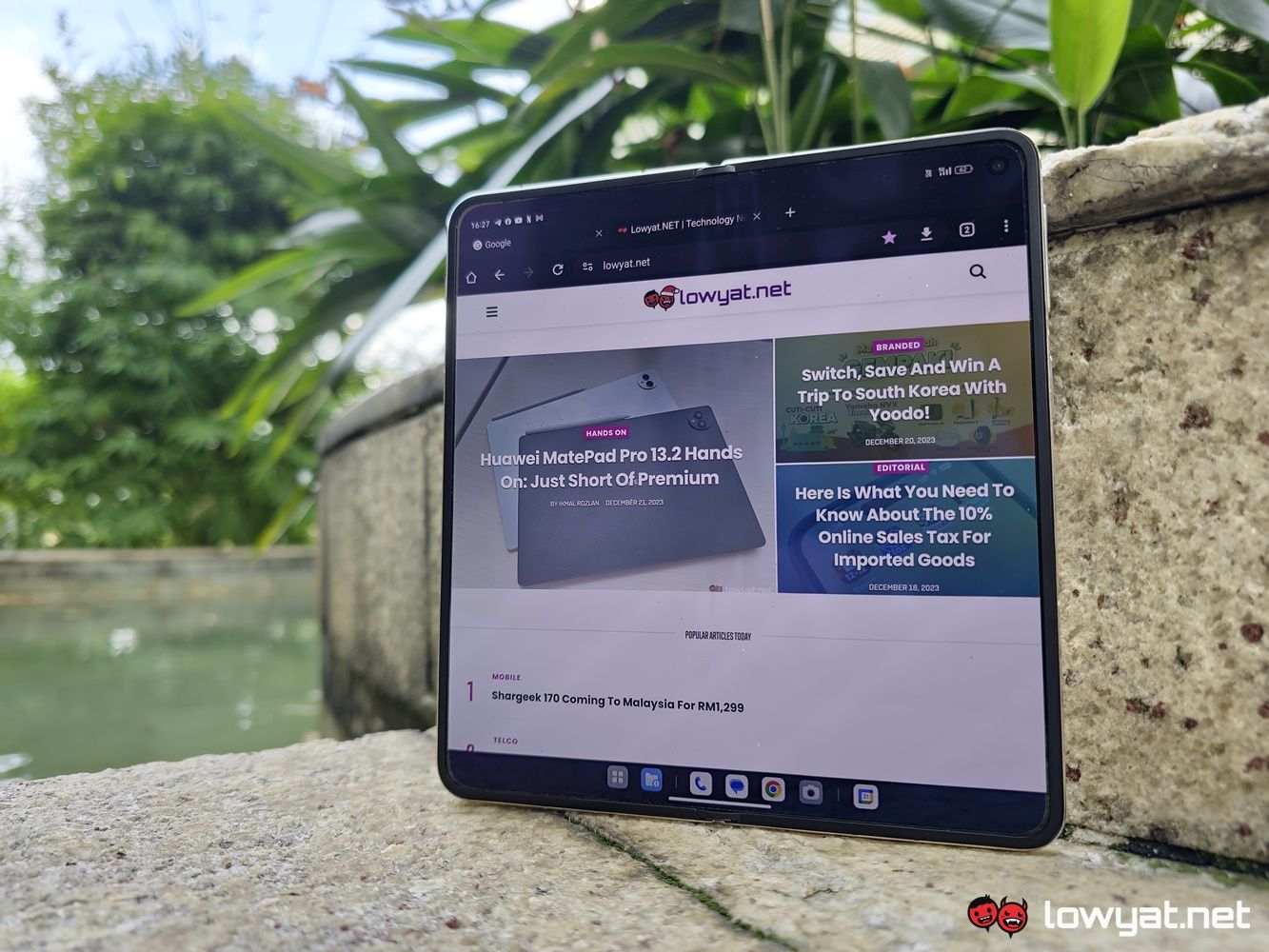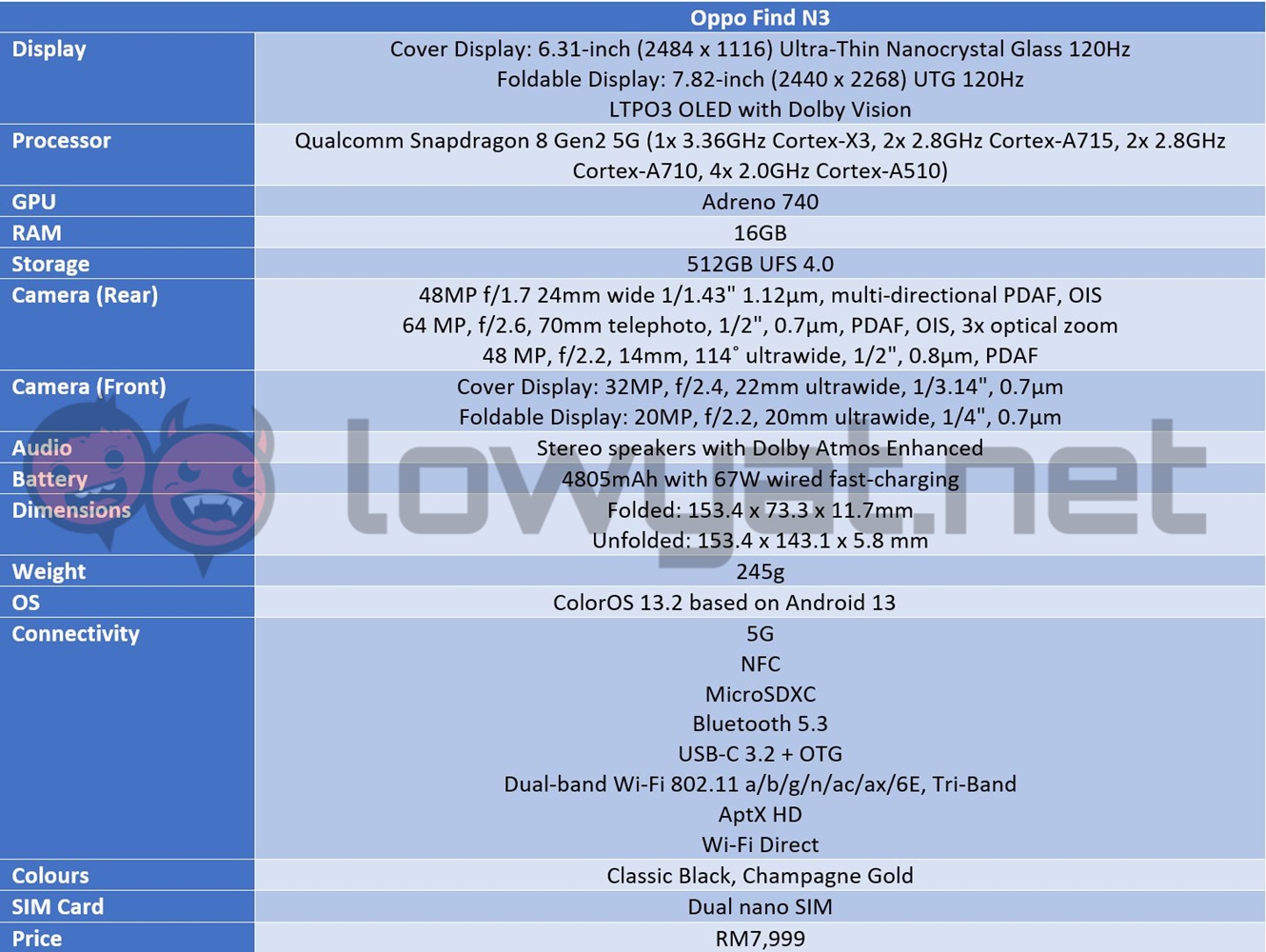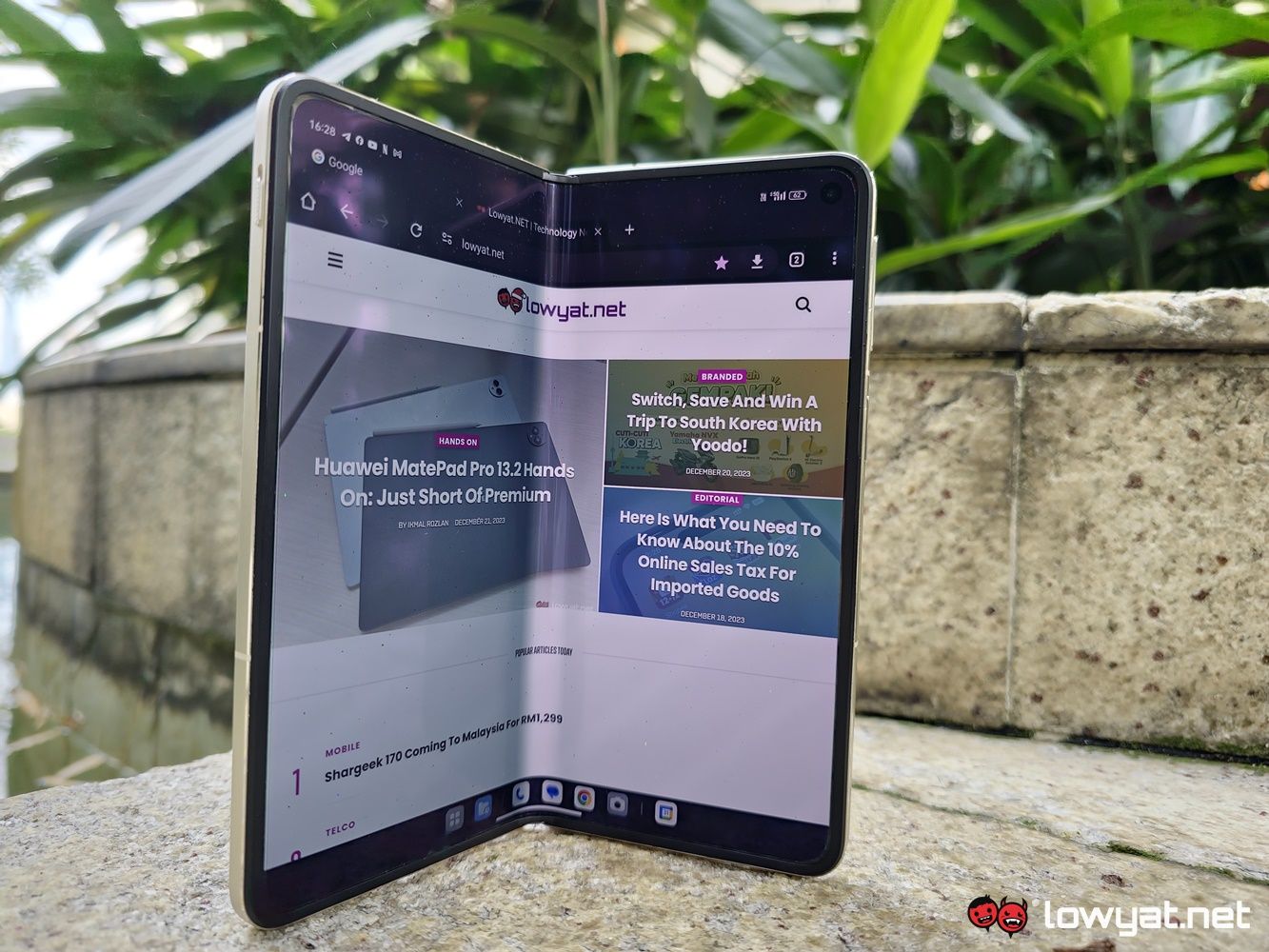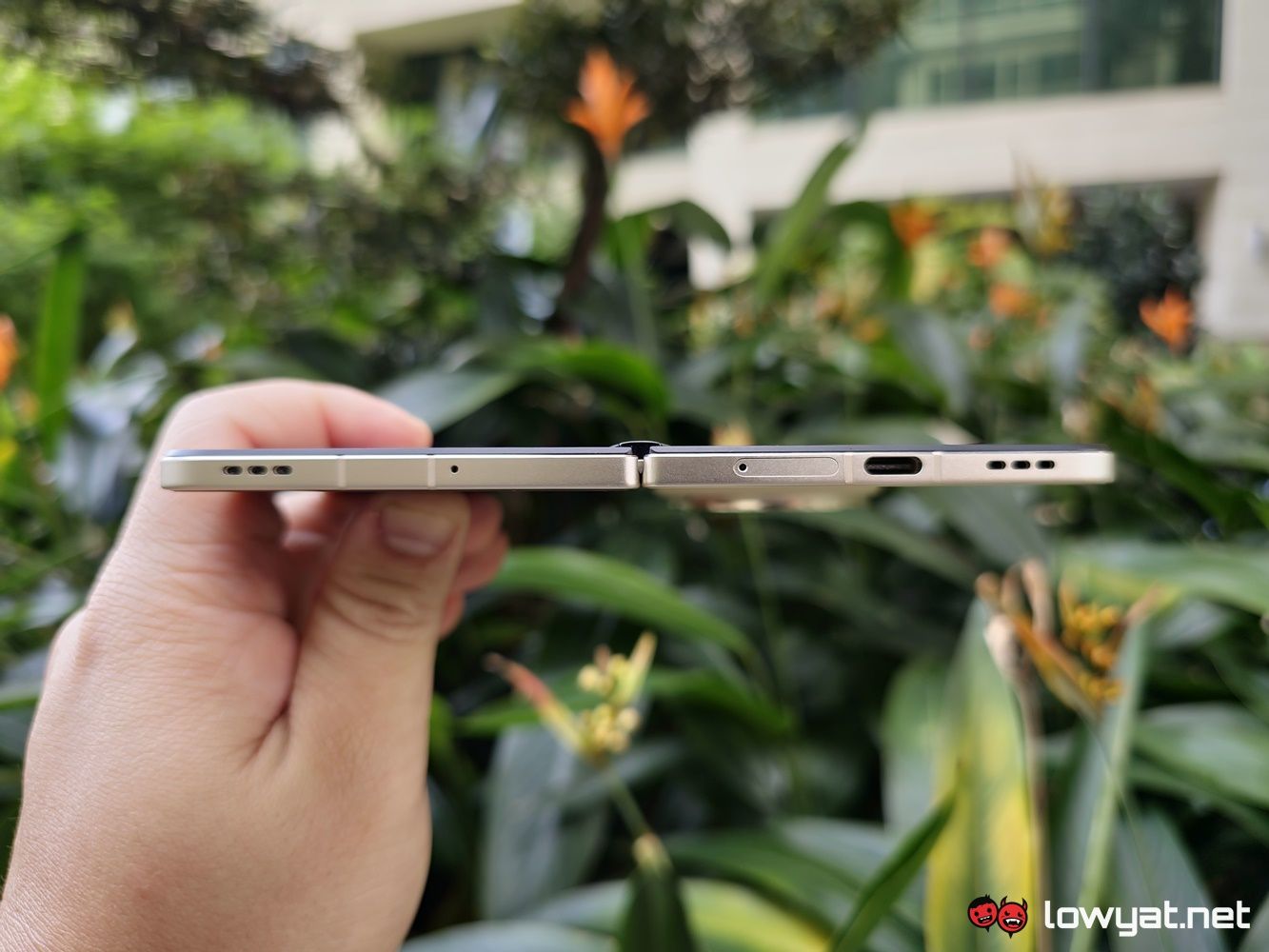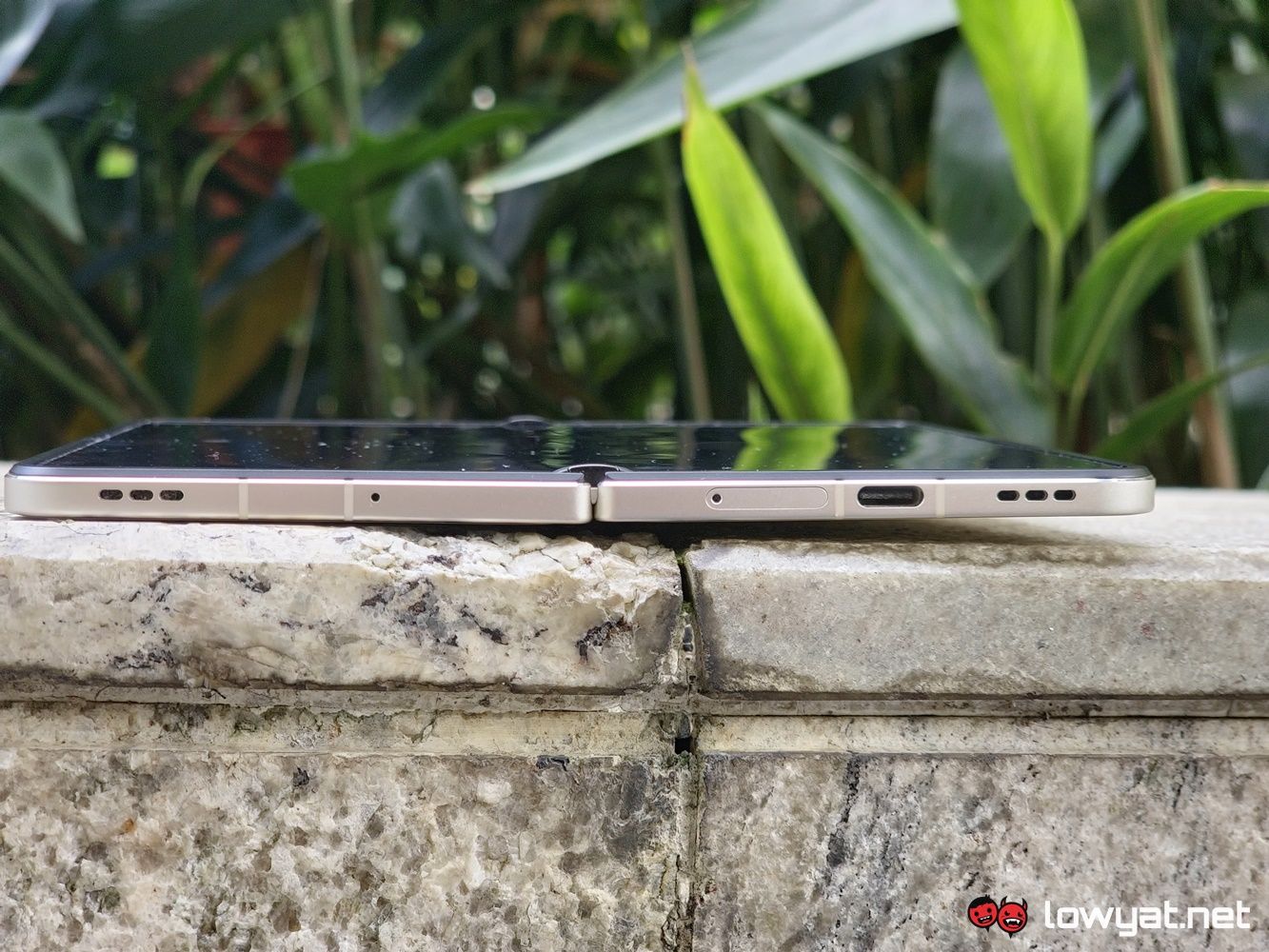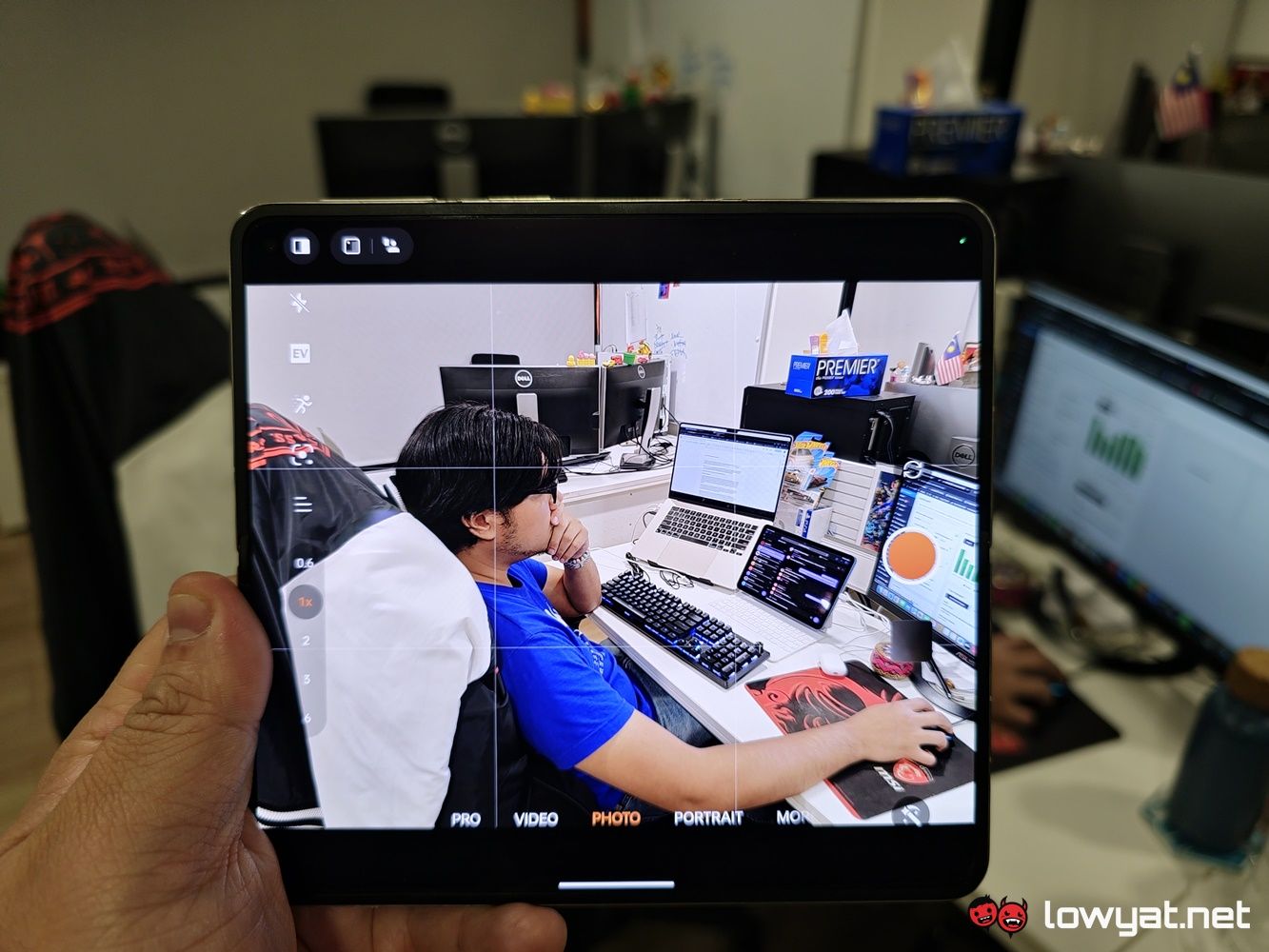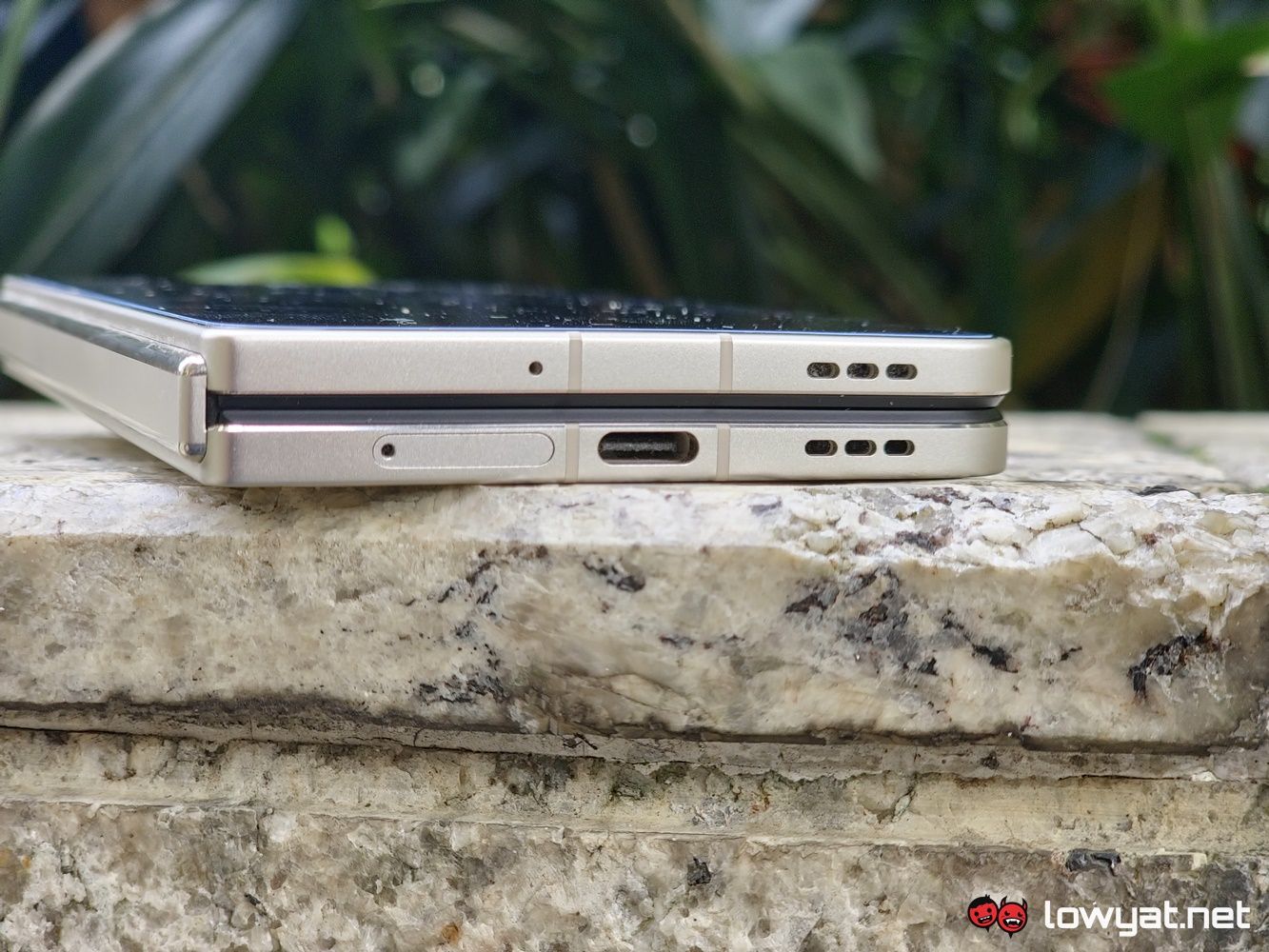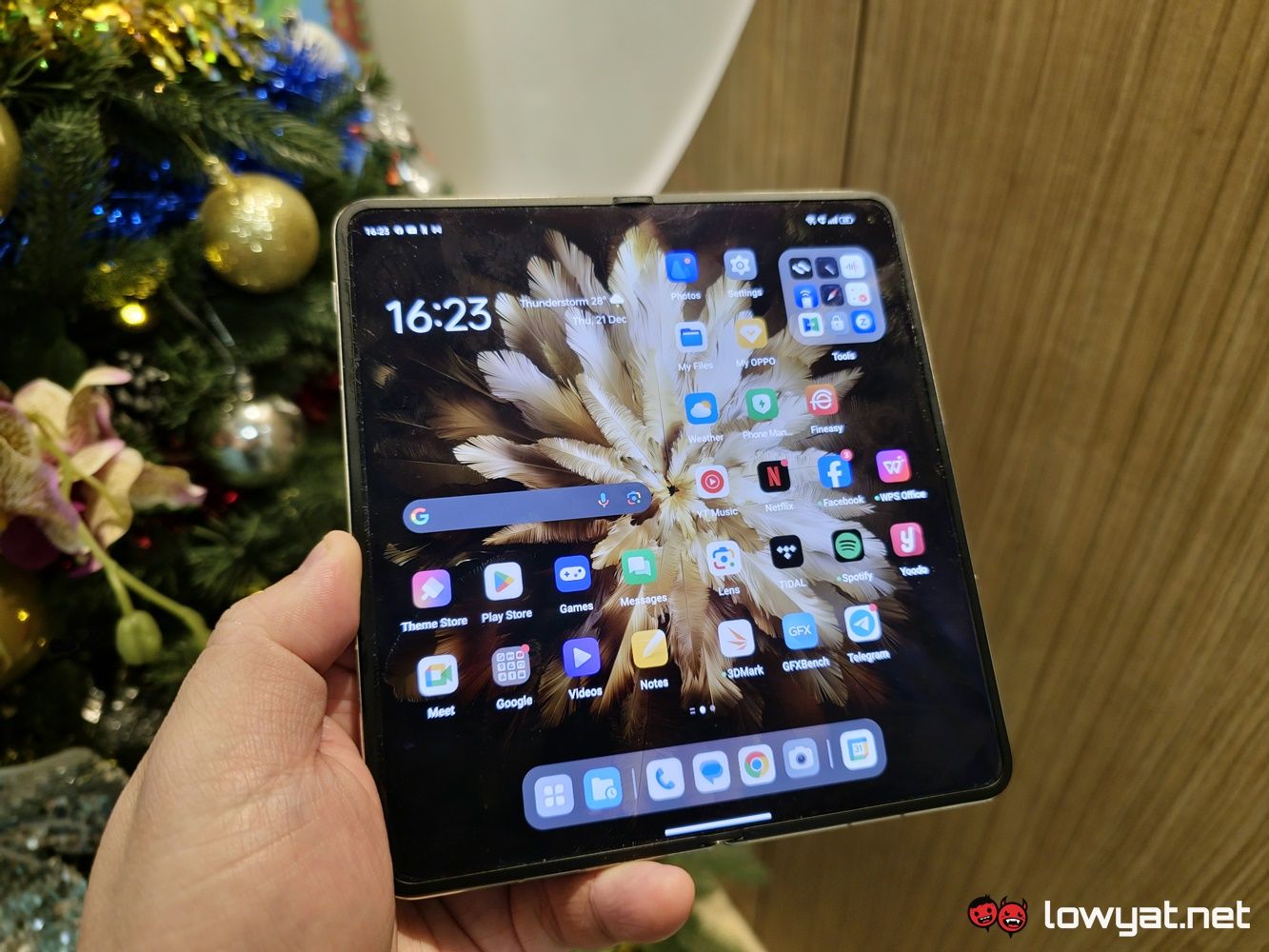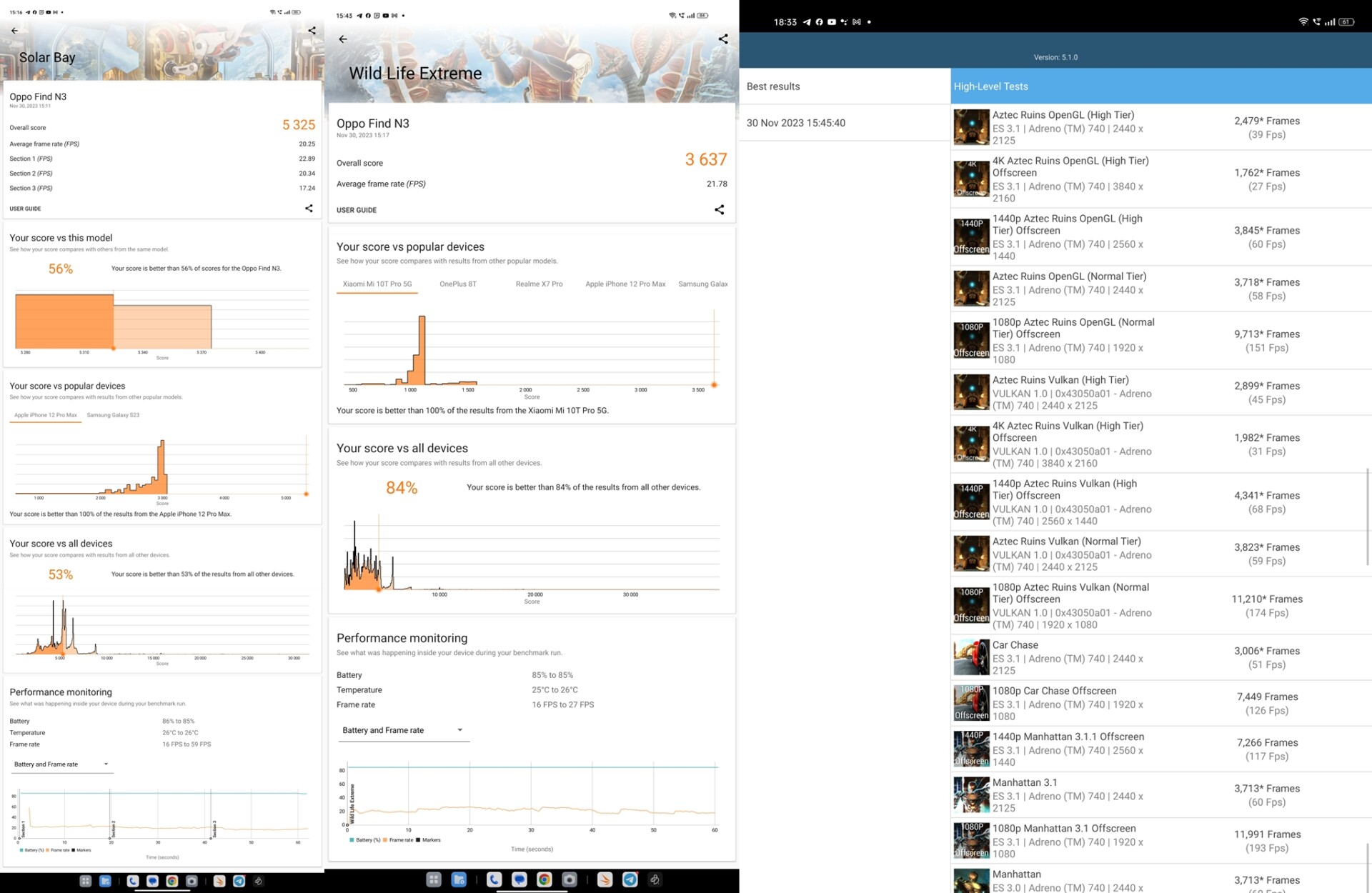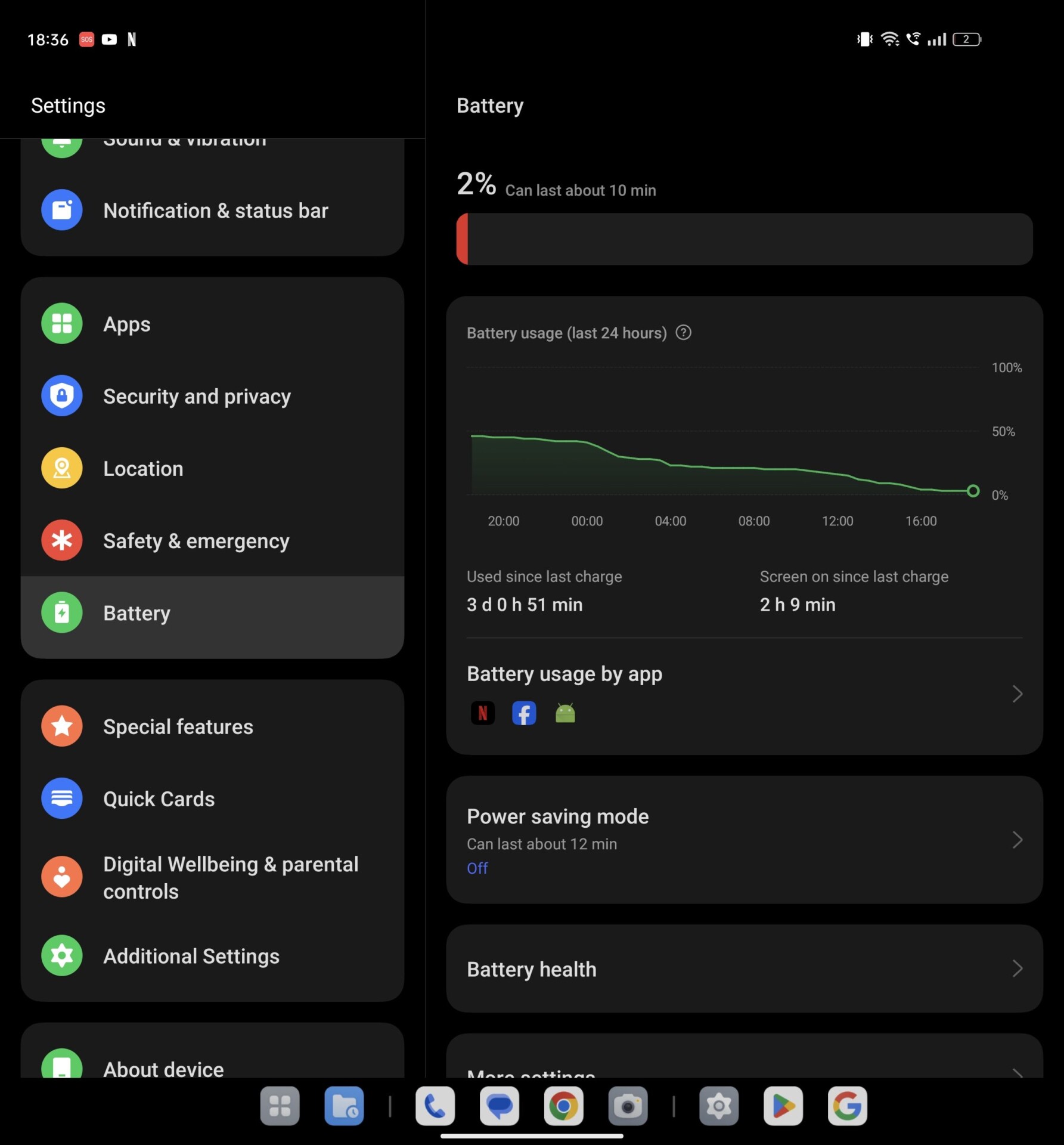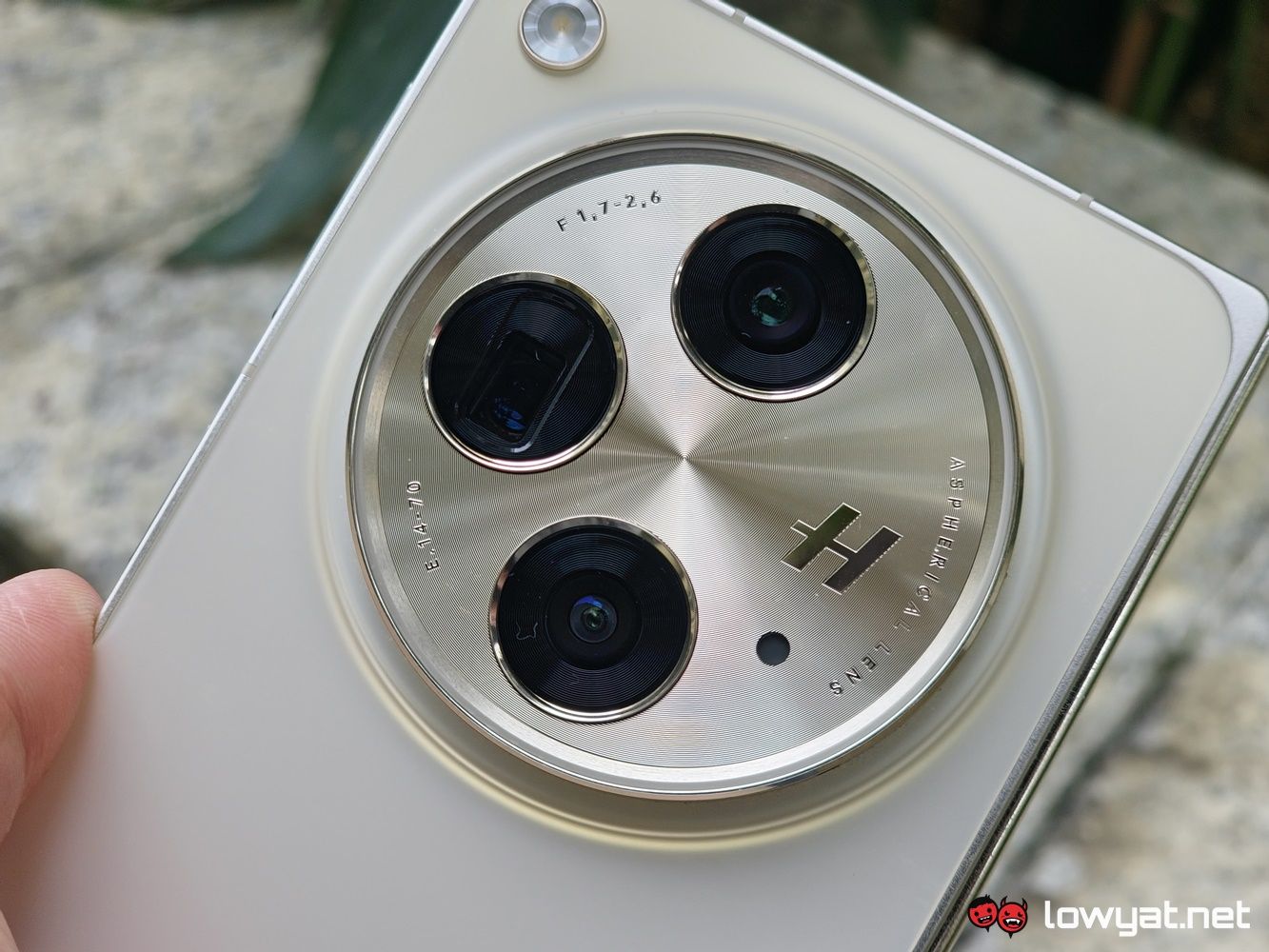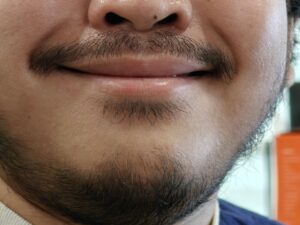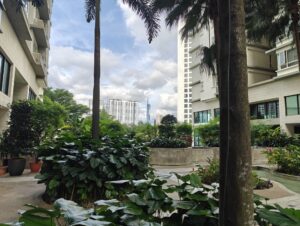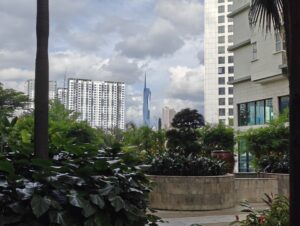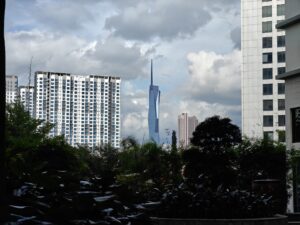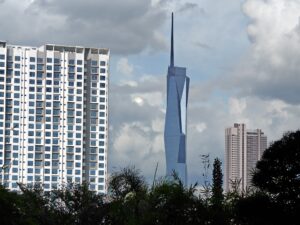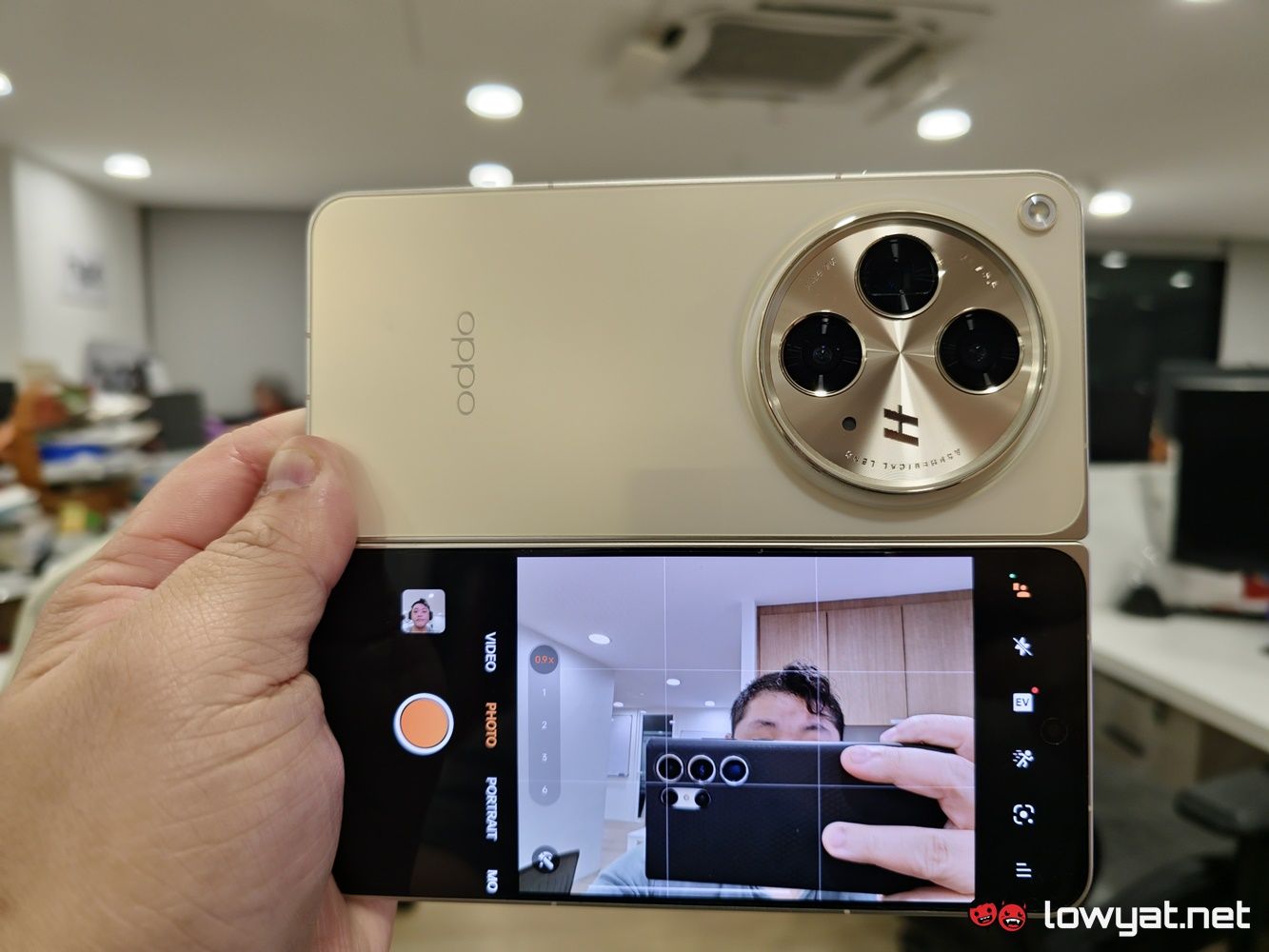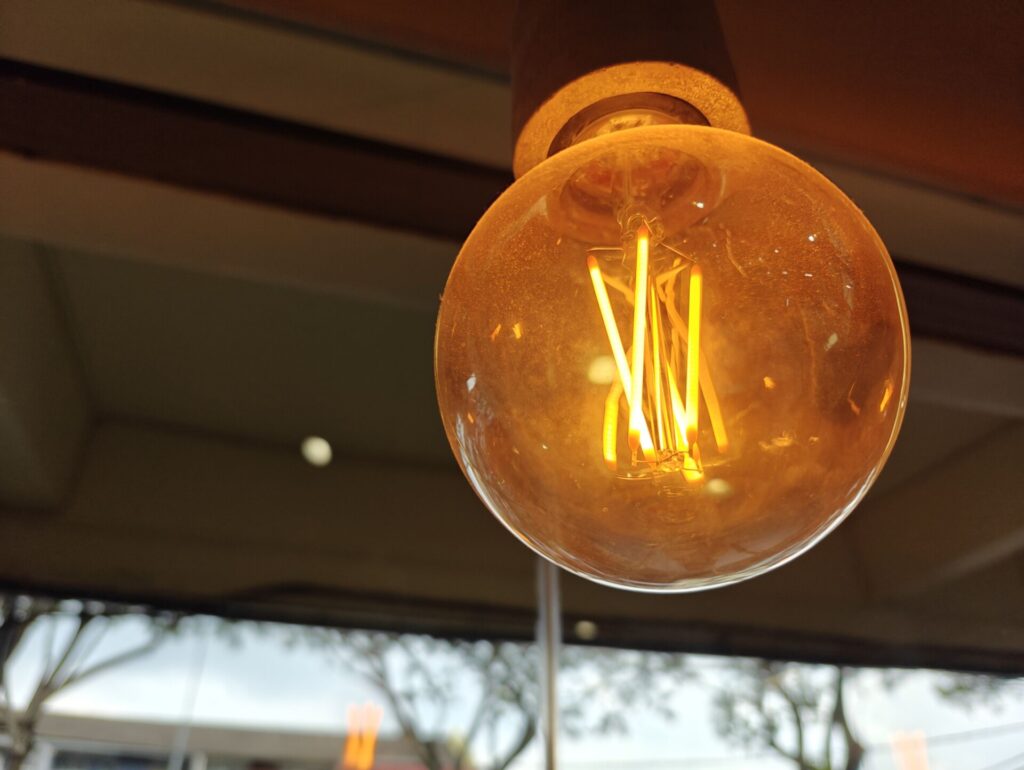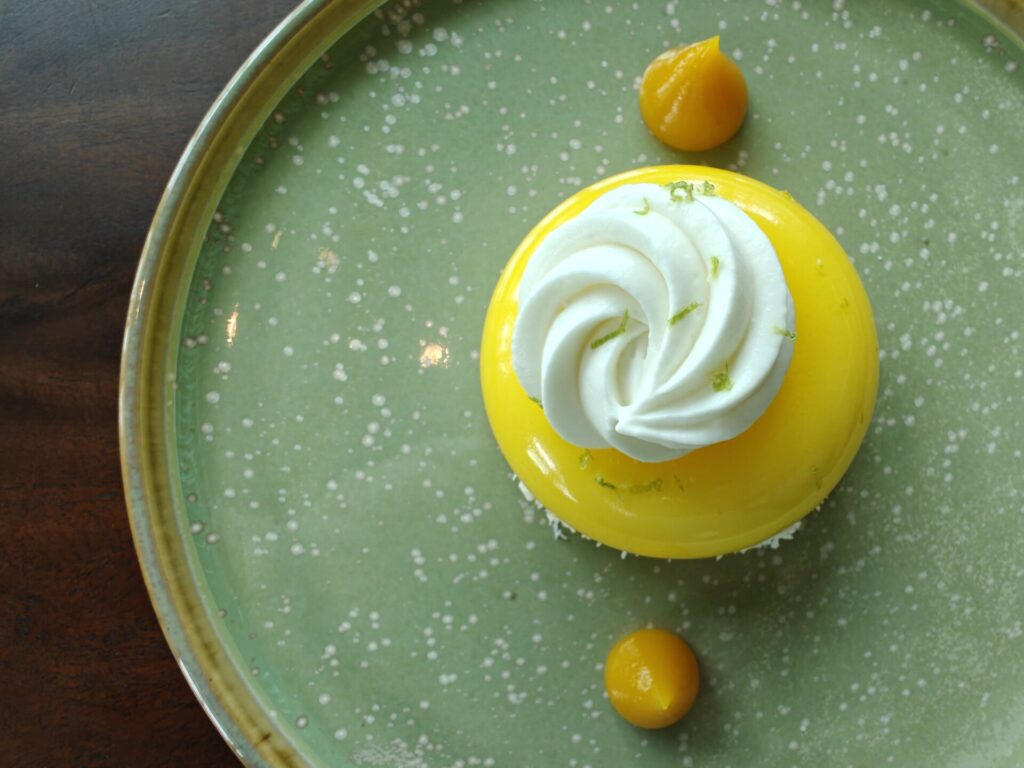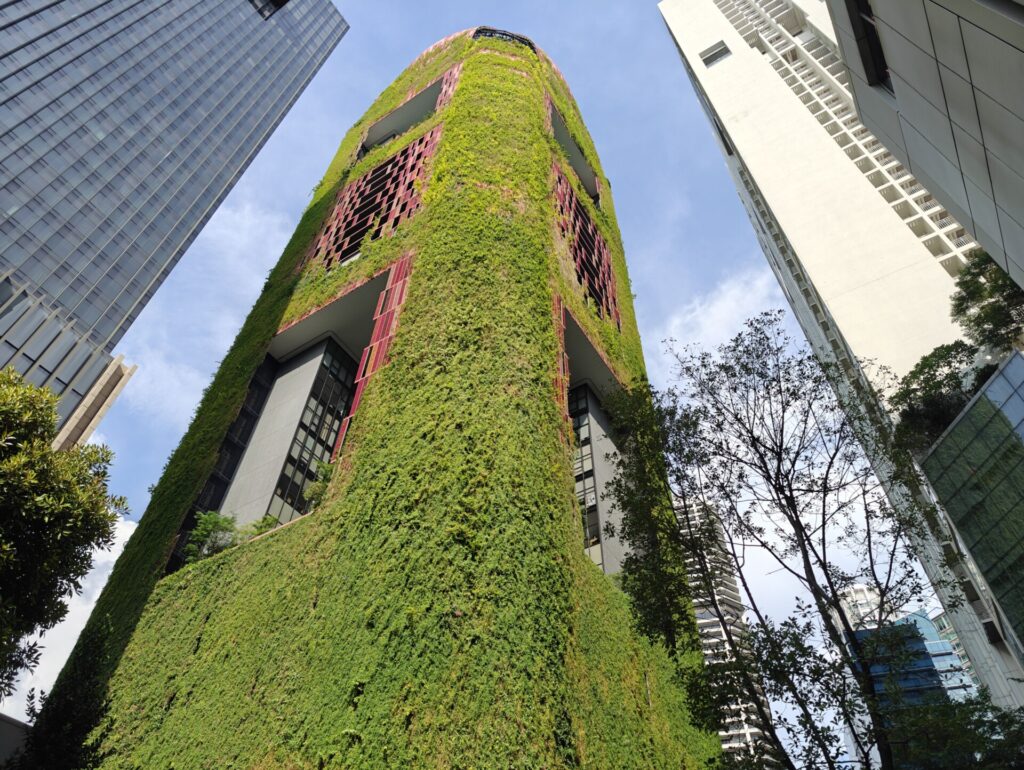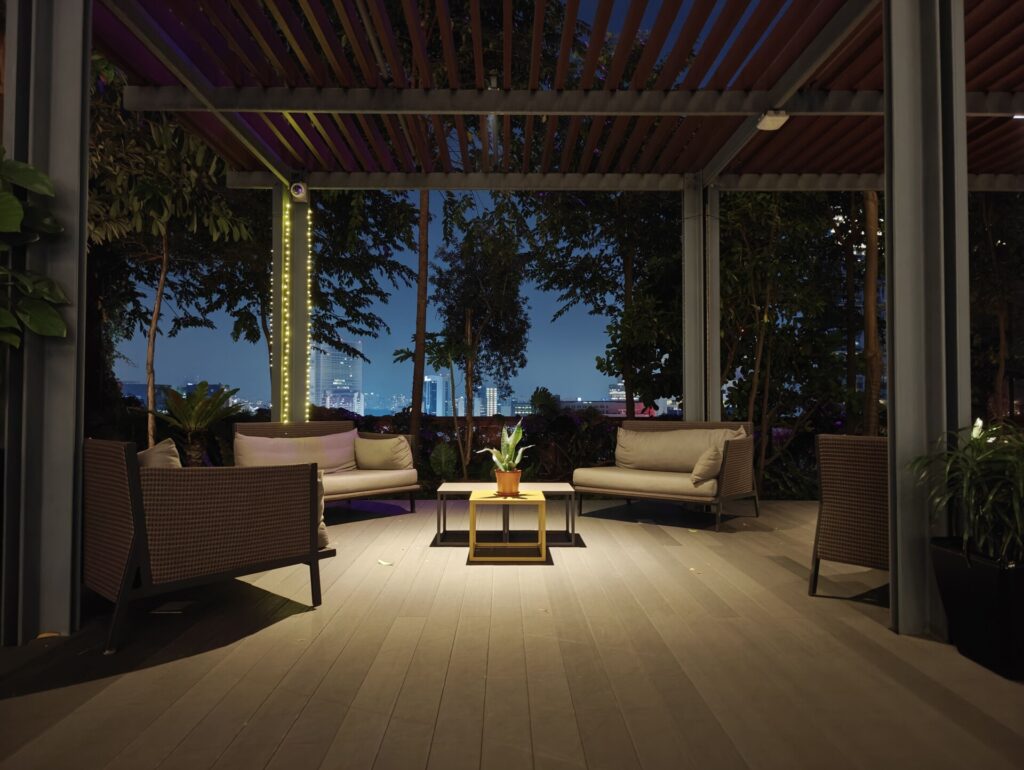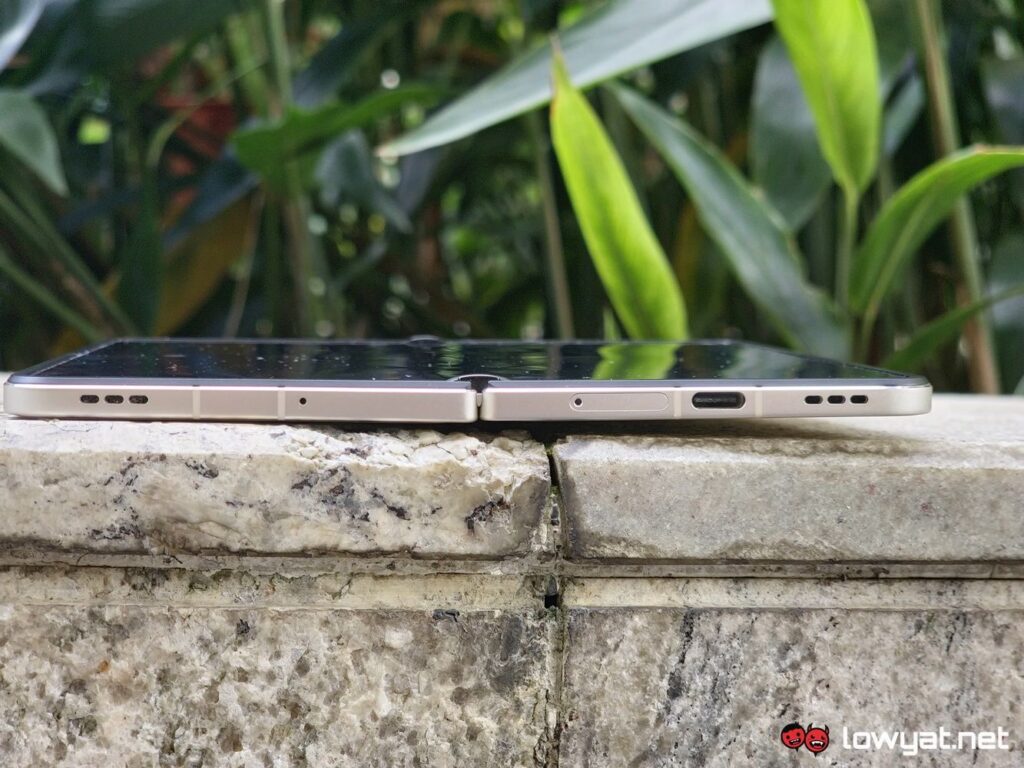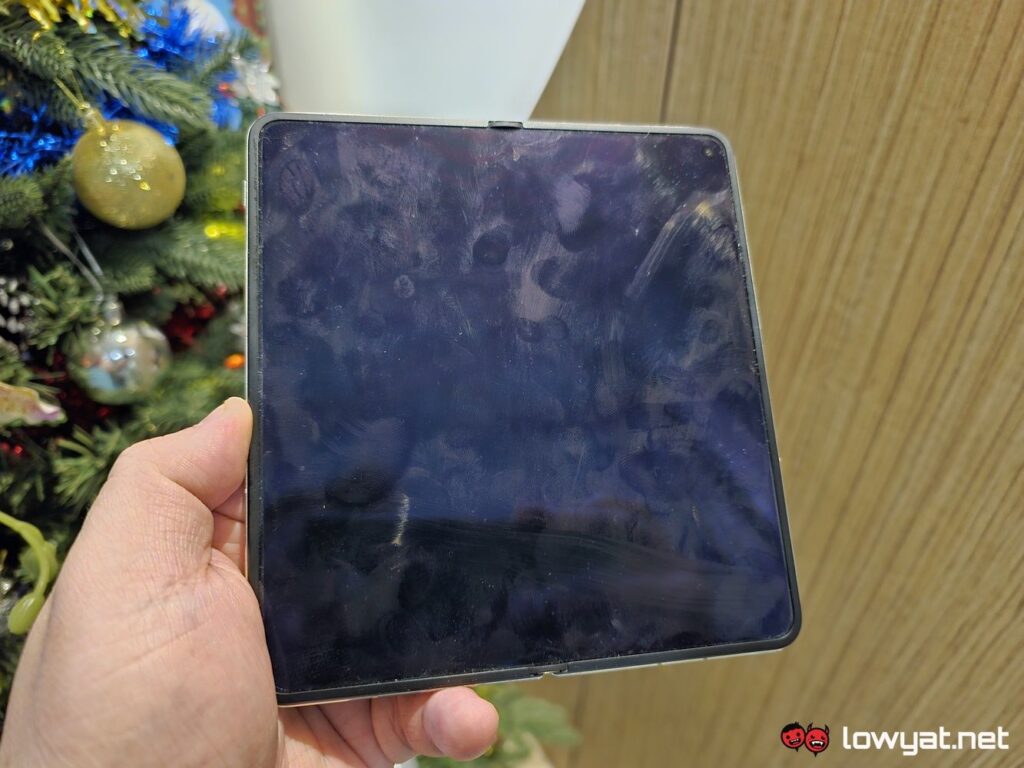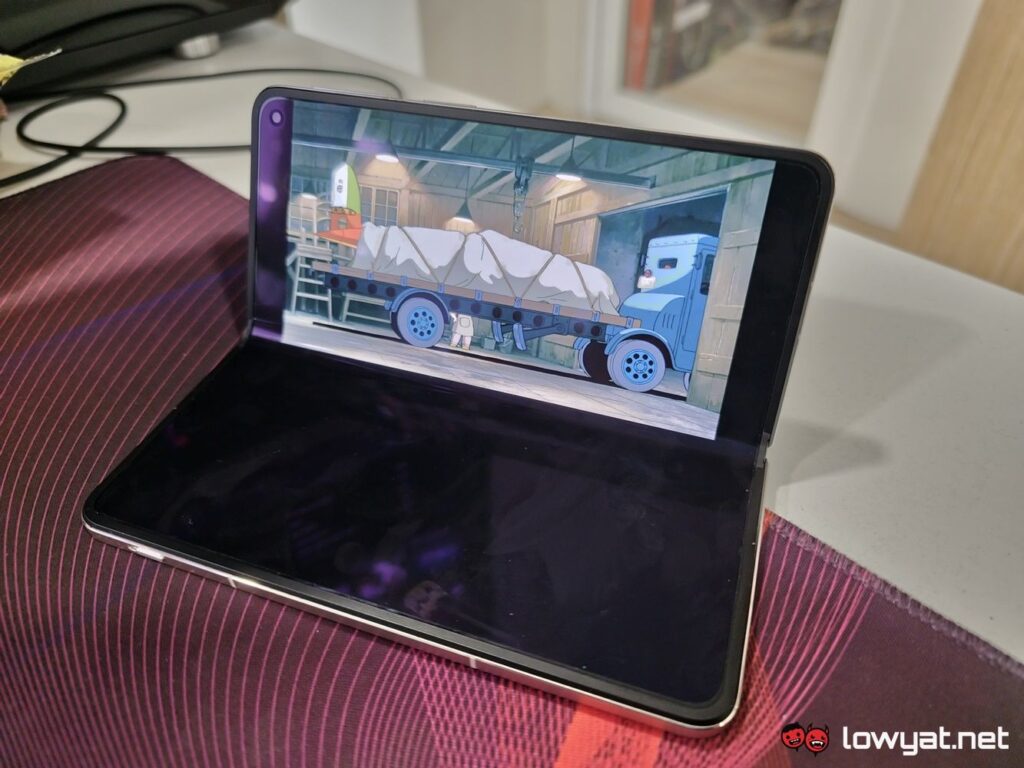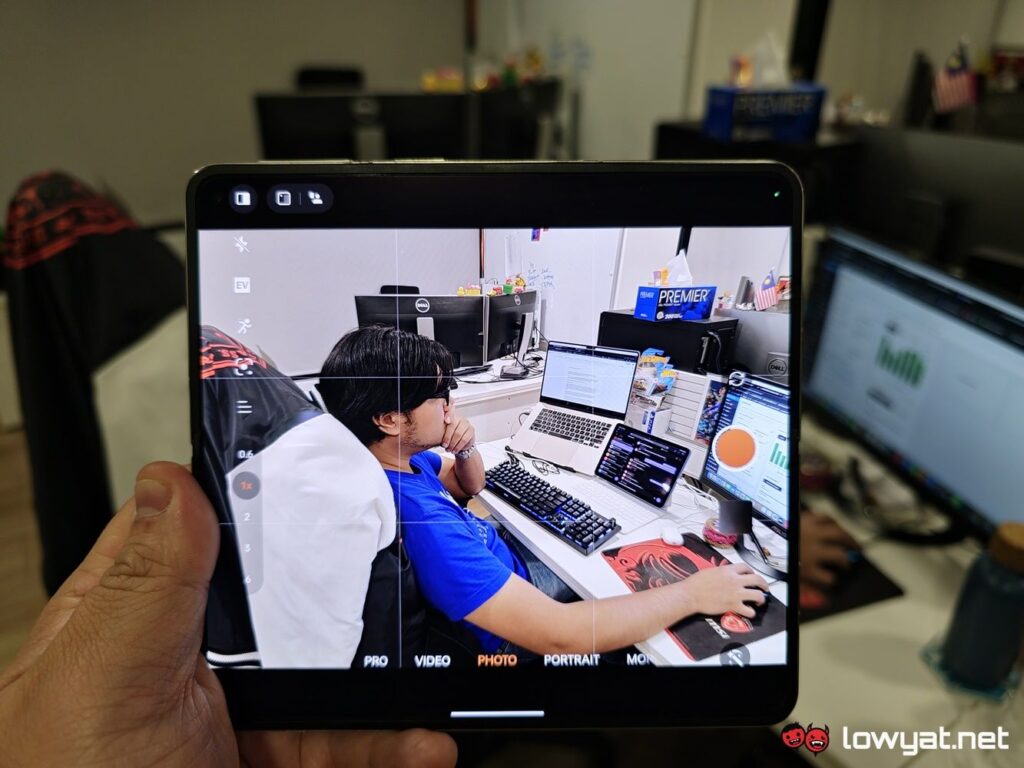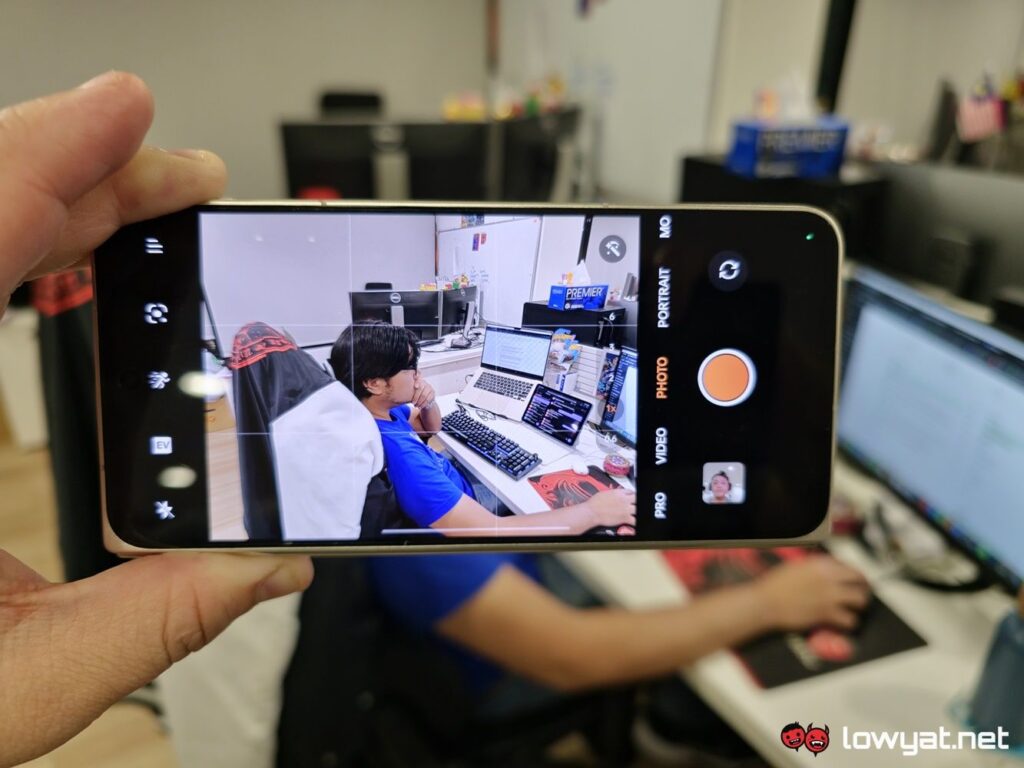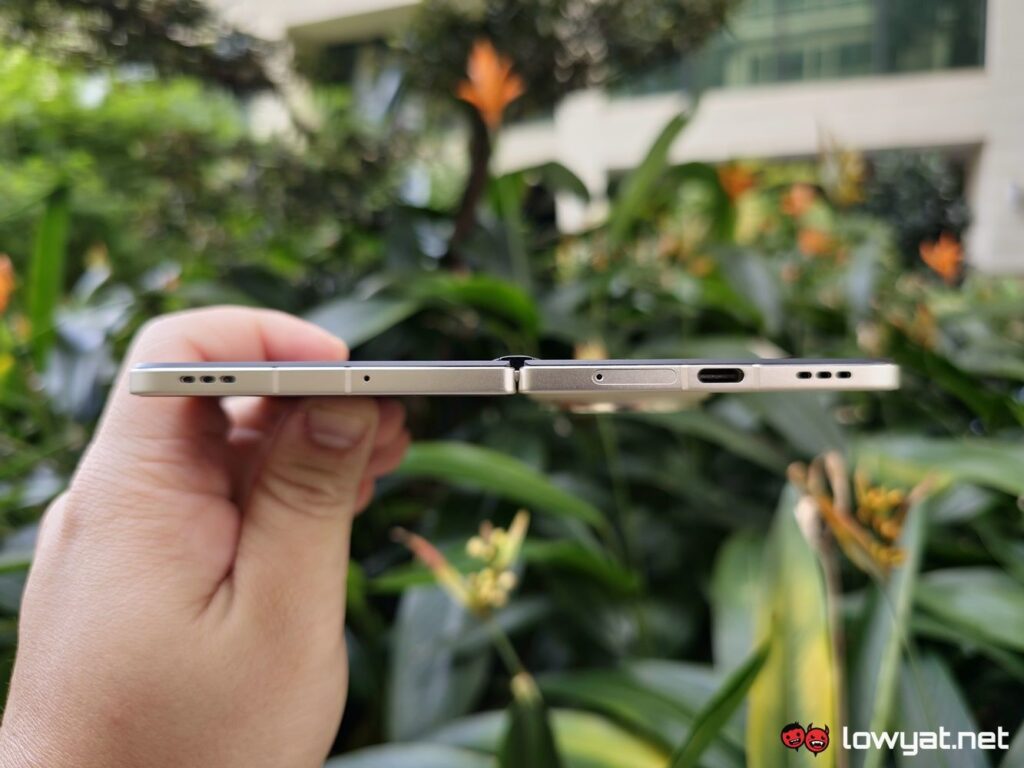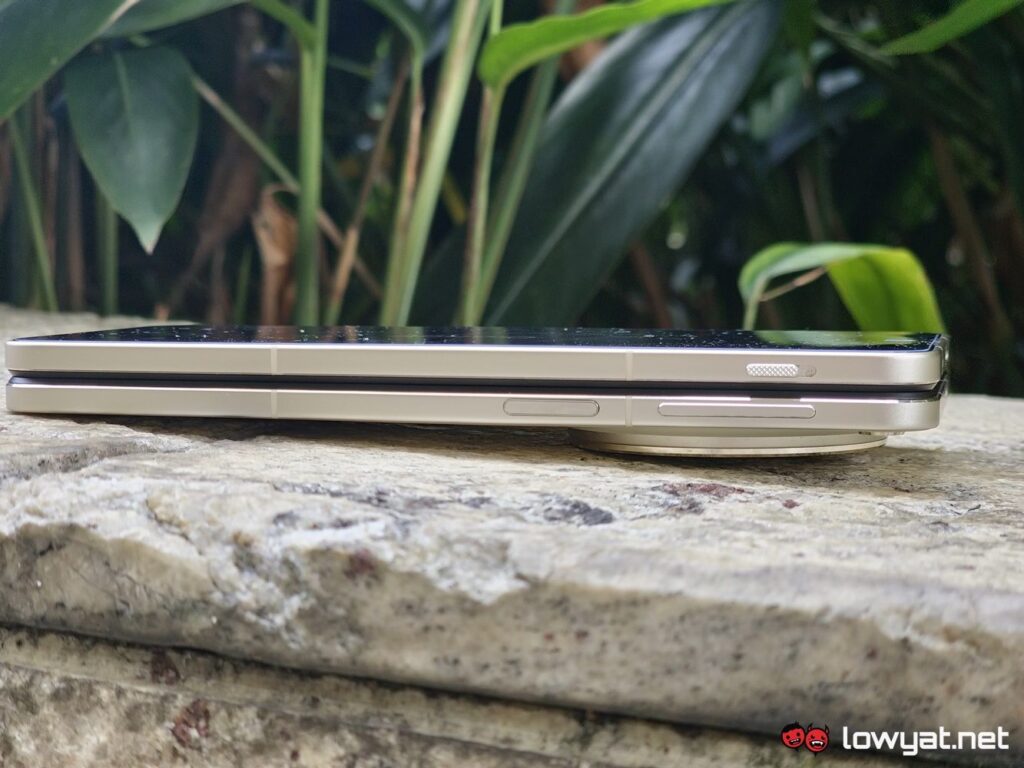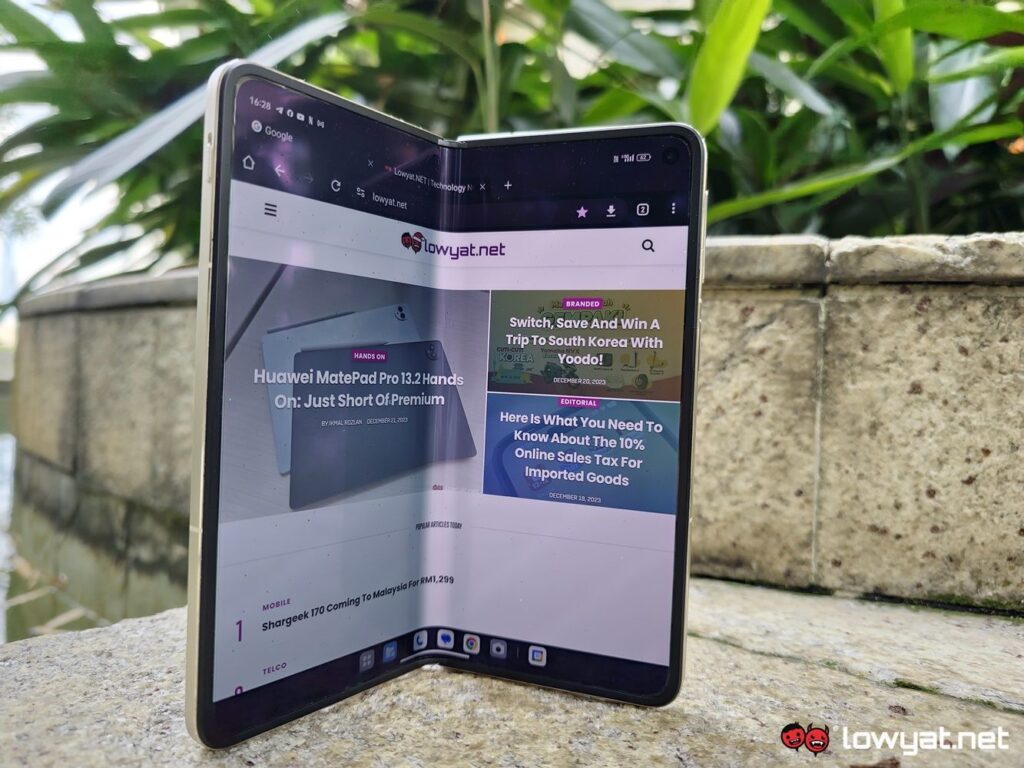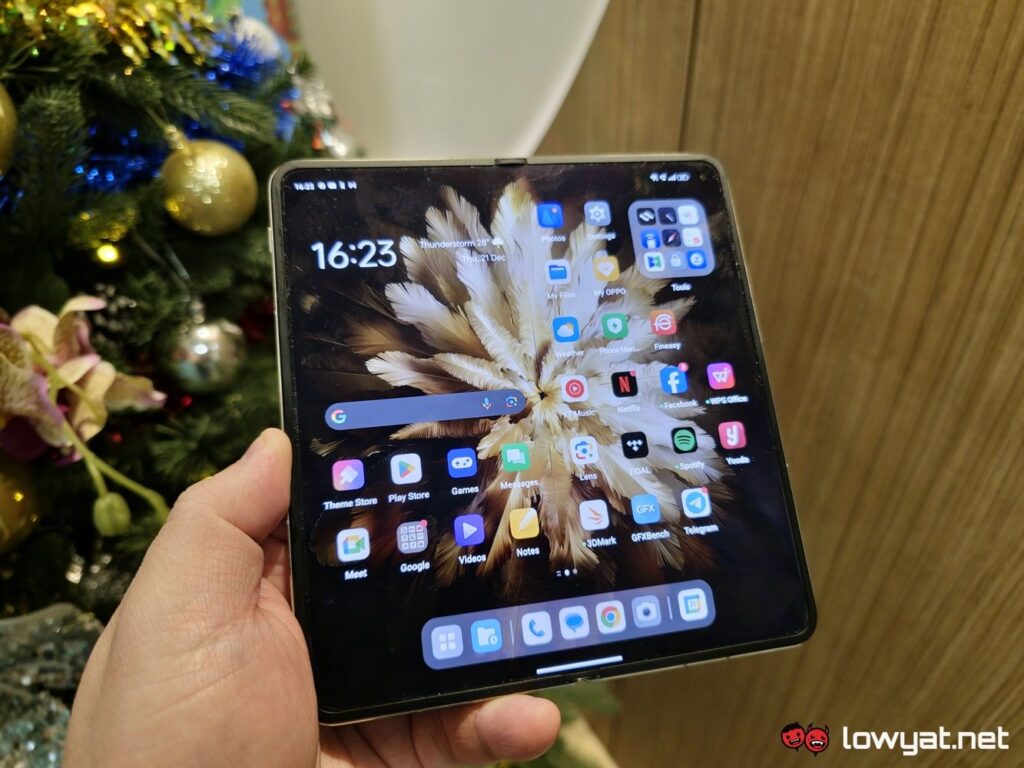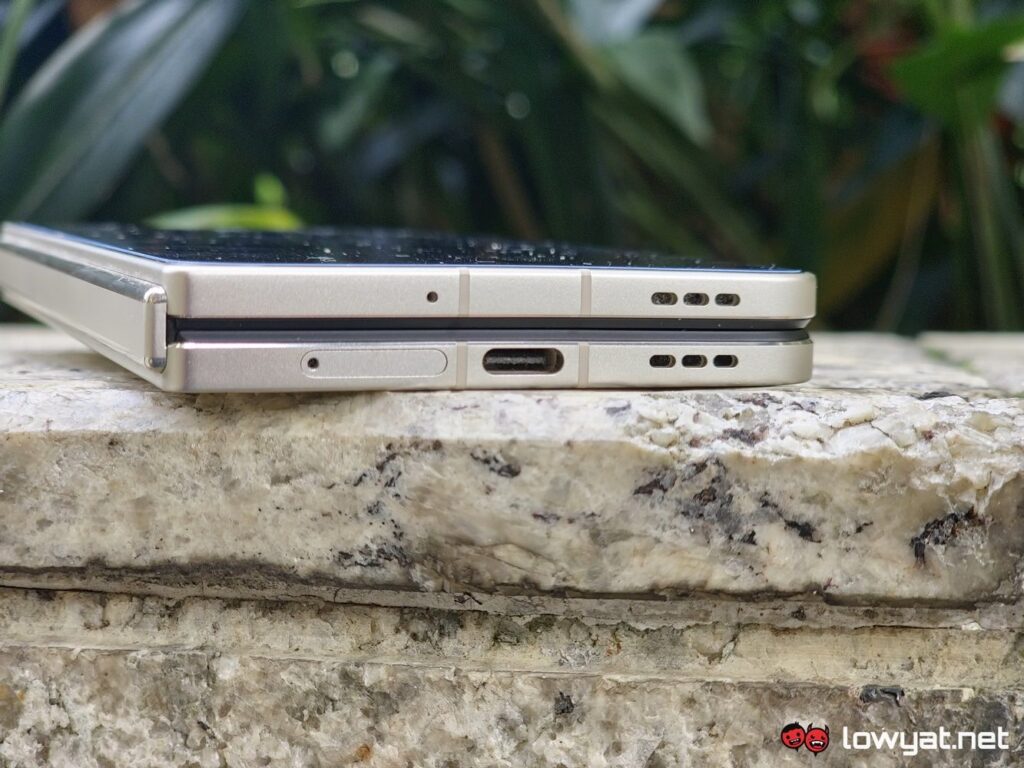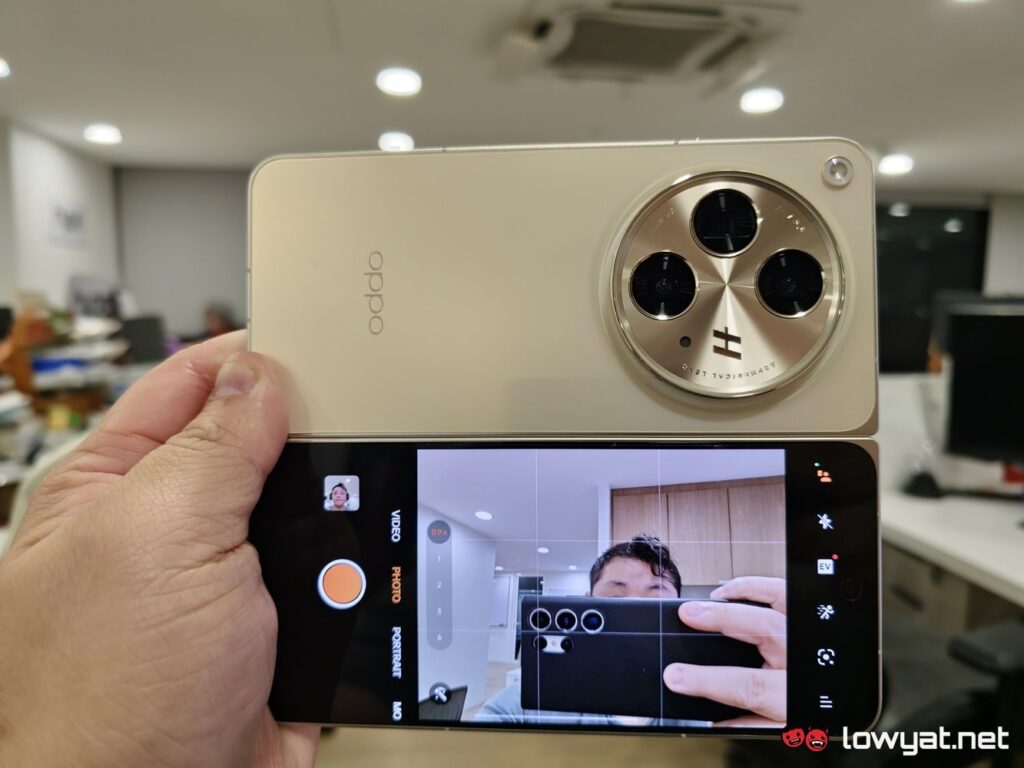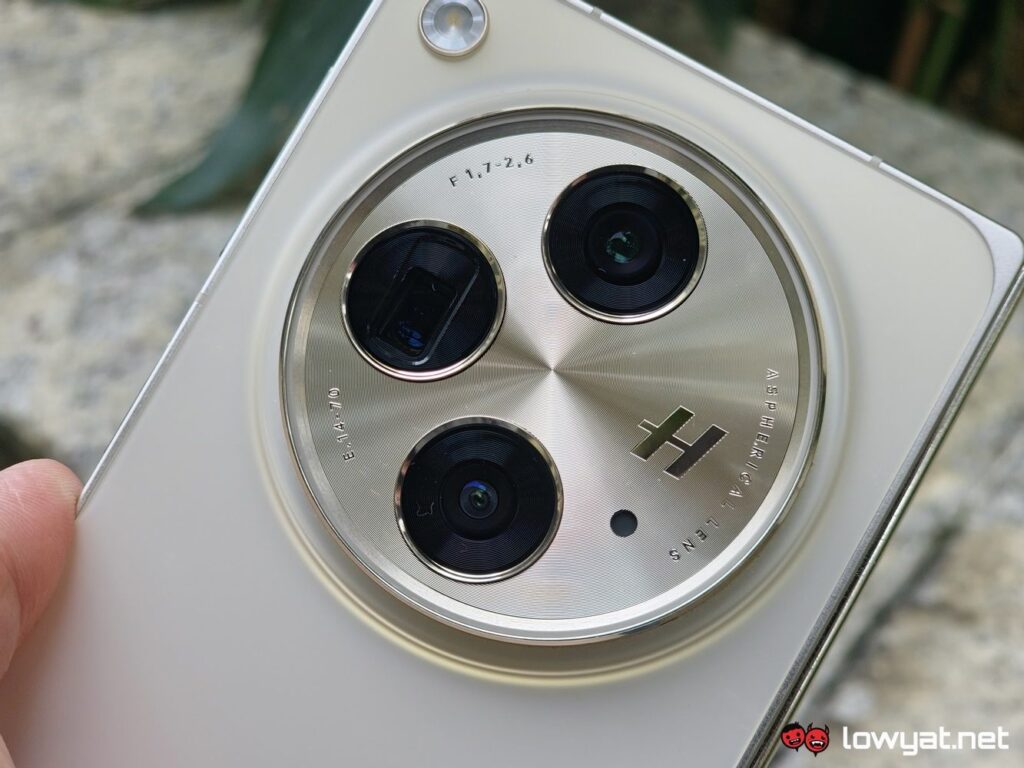When the original Oppo Find N made its debut more than two years ago, it signalled a change in the world of foldable smartphones. An alternative to Samsung’s own Galaxy Z Fold series, reviewers, including ourselves, found the one to be a feature-filled first attempt, concerns about the crease down in the middle notwithstanding.
We’re now into the 3rd generation of Oppo’s foldable lineup and it’s clear with the Find N3, Oppo is providing more than just a generational update to its flagship foldable.
Specification
Looks and Functionality
Compared to the original Find N, the Find N3 looks more…smartphone-sized. What I mean by that is the phone isn’t stubby-looking or shorter. That is, as oppose to the Samsung Galaxy ZFold devices being long and slim. This time around, it certainly looks more sensible and dare I say it, elegant with its thinner bezels and edges on the front. And that’s just the front display I’m very mildly gushing about.
Let’s address that elephant in the room: the Find N3 and OnePlus Open are the same, given that both brands are technically siblings. Everything from the internal hardware, the foldable display, the same slider that allows you to switch modes. Right down to the Hasselblad-aided main camera are identical, the main differences between the two being the names and their respective operating systems.
The Find N3 utilises a new and improved Teardrop hinge that Oppo says helps eliminates the folding crease that you see in the middle of the phone, when unfolded. In its defense, it helps to a certain degree and by that, I mean that the singular crease has been replaced with a wave of extra lines that you will most certainly see at specific angles, and when the phone’s foldable display is turned off.
Compared to its predecessors, I like that the Find N3 is able to fold halfway, transforming the upper half – this is when the phone is being viewed in its horizontal or “landscape” mode – into the viewing panel, while the bottom half acts as an anchor, for when I binge watch shows from a variety of streaming services, including Netflix and YouTube, to name a couple. I am aware some of you may find this to be a little odd or off-putting but believe me when I say – it’s a heck of a lot more convenient than having to carry one of those portable, plastic easels.
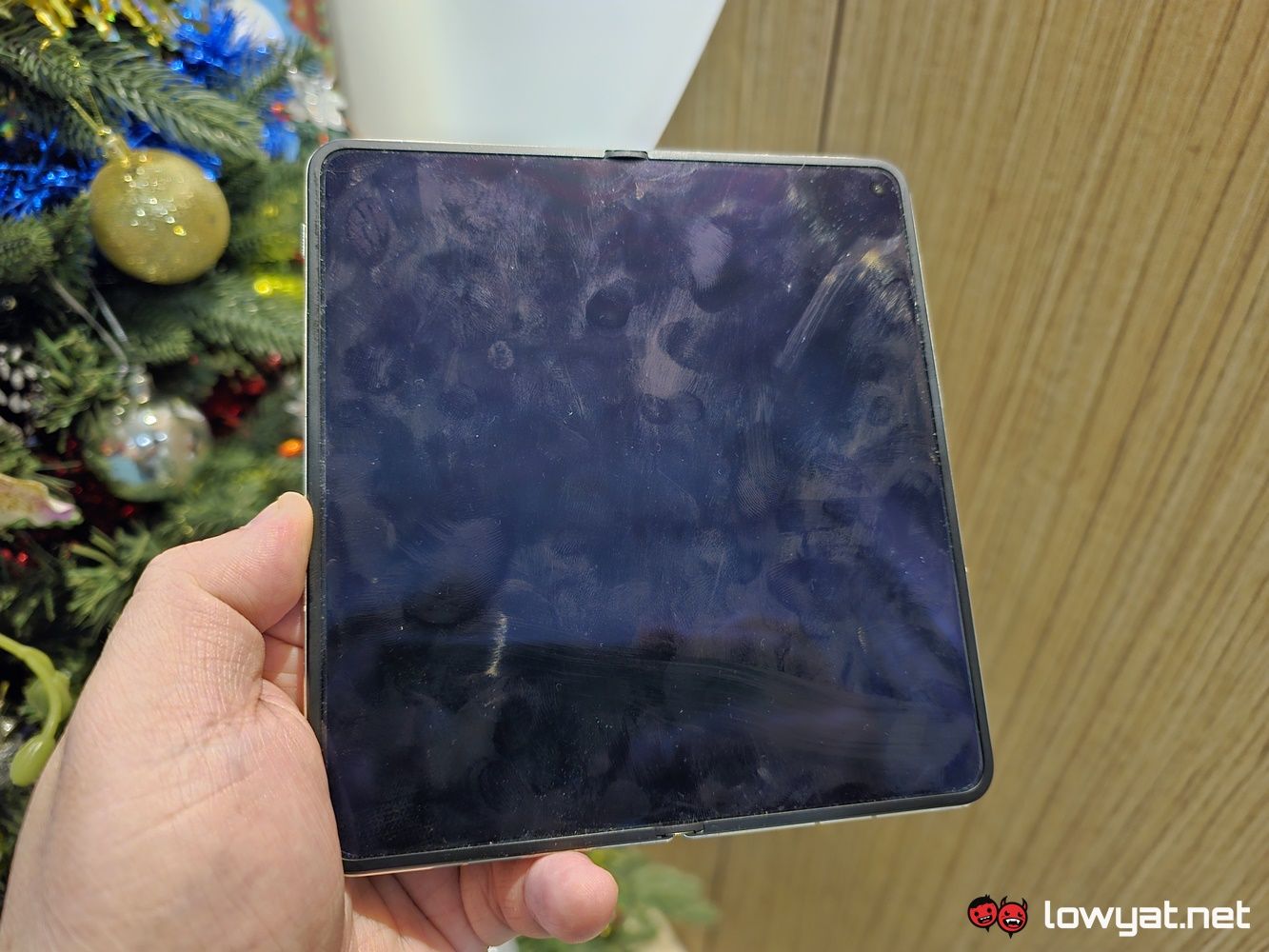
One flaw that still persists with foldable displays till today with other foldable displays is that it is a real fingerprint magnet. That flaw is made both more prominent and visible the minute the panel is turned off, at which point, I am beckoned with the deep desire to give it a good wipe. What’s the other flaw, you ask? It’s foldable nature or rather, its inability to completely unfold at a full 180°.
Here’s what I mean by that – Take the Find N3 and unfold it. Then, while holding the phone flat in your hands, bring it up to eye level and look at its light, but thin form factor. Pay extra special attention to the middle, where the folding point is. It is there you’ll see that the foldable doesn’t open completely flat. On that note, you now cannot unsee this particular flaw in the design.
Still on the subject of displays, the external display is, mercifully covered with a plastic screen protector out of the box. I see it as a good thing, simply because I only took it off after I tested the phone extensively and was ready to take the obligatory product shots of the Find N3.
Perhaps the most glaring aesthetic of the Find N3, in its entirety, is the massive protrusion on its back that is its main camera module. I’ll be brief here, given that there’s an entire section for this component alone – specs-wise, the Hasselblad-enhanced main array comprises a 48MP wide as the main sensor, a 64MP telephoto, and a 48MP ultrawide. The selfie cameras, plural, consist of a 32MP for the cover display, and a 20MP for the sensor on the foldable display.
Battery-wise, the Find N3 has a 4,805mAh Lithium Polymer battery that supports 67W SuperVOOC fast-charging. It’s a little small, given that other brands are equipping their flagships with a 5,000mAh battery but believe me, there are actually some legs on the battery.
Performance And Battery
With a Snapdragon 8 Gen2 SoC inside, there’s not much else I can say here that you probably haven’t already heard about it, at this point. On a software level, everything runs smoothly and optimally. Apps open instantly and swapping between open apps are seamless and fluid. Synthetically, the chipset effectively dominates every benchmark that I have thrown at it.
The foldable display is, at the very least, sunlight readable, so even when I’m standing outside under direct sunlight, the compensation it has to make for the extra glare is minimal. The LTPO3 OLED display is a treat for the eyes and it’s not because of its adaptive refresh rate. Honestly, that last part has been oversold a lot in the past and frankly speaking, while it does play a substantial part in making the viewing experience that much more comforting, it isn’t the be-all and end-all for any device.
What I find really impressive about the Find N3 is the Boundless View feature. Granted, it’s not a groundbreaking feature that you can find something similar with Samsung’s Galaxy Fold devices and tablets. It’s also not necessarily the most useful or productive feature to use on the phone but seriously, having three different apps on screen simultaneously to view feels a little, dare I say it, radical.
On another note, the Find N3 suffers from the same issue I encountered with the Galaxy Z Fold series: being unwieldy in one-handed scenarios. Once open, using the device with both hands becomes a necessity, especially if you’re on the move. For another matter, and as I mentioned earlier, I like that I am able fold the phone halfway, transforming the upper half into a media player while the bottom half serves as an anchor or cradle. My only gripe with this scenario is that, in this use case, the bottom half of the display is left empty, but only when a show is playing.
Battery life on this foldable is surprisingly quite long.
As I briefly alluded to earlier, the Find N3 and its internal battery have some surprisingly long legs. On average, the phone goes from 100% to single-digit battery life after a day and a half of use as my daily driver, which is a marked improvement over the Samsung Galaxy Z Fold5 and its own battery battery endurance.
Speaking of endurance, using it to binge on Netflix yields close to nine hours of continuous use on average, for me at least. That’s good, especially if you’re on a long-haul flight and you just have no patience to scroll through whatever the in-flight entertainment has on tap, because you simply want to go through as many episodes of a series that’s already five seasons in.
Camera
But enough about the Find N3’s general aesthetics and overall hardware. Let’s talk about the phone’s real defining feature: that massive machine-milled housing and main camera that has been tweaked in collaboration with Hasselblad. And boy, does that triple-sensor camera really know how to work.
The Stacked Pixel Architecture that Oppo claims to be able to store 140% more light than a conventional sensor actually holds water, with the majority of images I snapped in low-light conditions actually turning out to hold more detail than most flagship cameras I’ve tested, especially when capture during the night.
Then there’s the zoom depth of the Find N3’s main camera that, again, is equally remarkable. Even at close proximity and at maximum optical zoom (that’s 6x with the telephoto lens), the amount of detail it is able to retain is absolutely breathtaking. Take the following series of images of my colleague, for example. With the camera fully zoomed into his face, you can actually still see all the details of his beard, and the best part about this is that the images don’t look washed out or grainy. That is, unless you start to go beyond that and use the digital zoom function, at which point you are going to see more pixels, rather than details.
To that end, and given that it is a foldable, it’s essentially a no-brainer when it comes to taking selfies; unless you’re doing a concall via mobile or you’re having a quick video chat, and you’re a semi-pixel peeper like me, I cannot think of any other reason for me not to flip open the phone and have the main camera pull of the task.
Sample Images
Competition
Samsung Galaxy Z Fold5
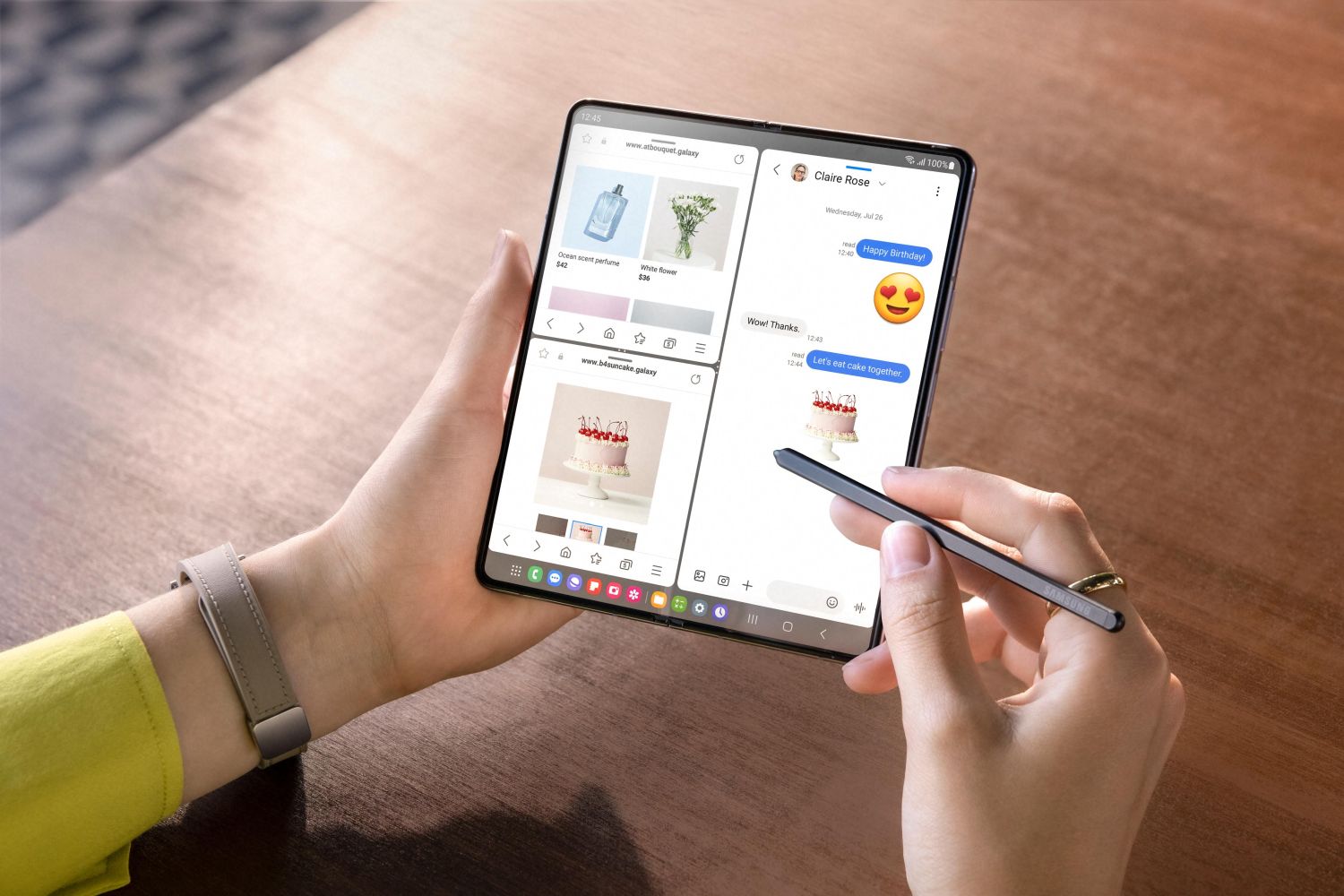
It can be argued that the Samsung Galaxy Z Fold5 is very clearly an obvious, if not the only competitor that the Find N3 needs to beat, be it by a thin margin or a huge leap. Specs-wise, the Fold5 is rocking a Snapdragon 8 Gen2 SoC, 12GB RAM, 512GB storage capacity, and a smaller 4,400mAh. It’s also got a triple-camera main array comprising a 50MP wide, 12MP ultrawide, and 10MP telephoto. In terms of displays, the cover display is a 6.2-inch AMOLED 120Hz panel, while the internal display is 7.6-inches with the same AMOLED panel technology and 120Hz refresh rate but is also HDR10+ certified.
But what makes the Fold5 unique compared to the Find N3, though, is that it can be paired with Samsung’s S Pen, making it a more professional-friendly device, especially for individuals that have a hankering for note-taking the “traditional” method.
At current, it is also slightly cheaper at RM7,299.
Honor Magic V2
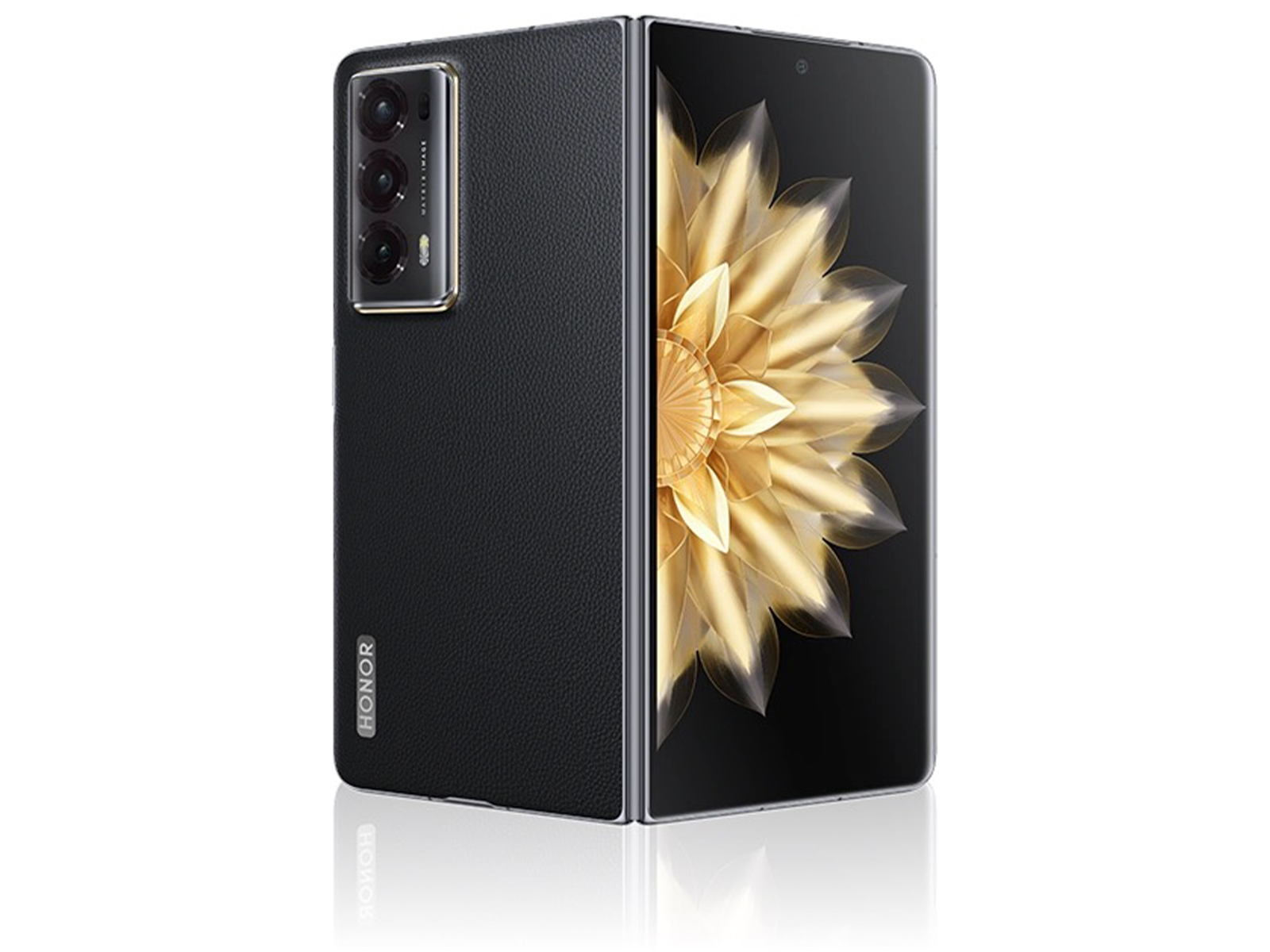
Launched earlier in July this year, the Honor Magic V2 is a foldable by the former Huawei subsidiary. Like the Find N3, it’s also equipped with the same Snapdragon 8 Gen2 SoC and 16GB RAM. The cover display is relatively large at 6.43-inches, while the main display is 7.92-inches and is using an LTPO OLED panel, with a refresh rate of 120Hz and peak brightness of 1,600 nits.
Price-wise, the Magic V2 retails at at RM7,169.
Conclusion
At RM7,999, the Find N3 is a big boy’s toy, a device for someone with oodles of disposable income and to that end, it’s a luxury item that, while not necessarily practical at times, individuals would buy, all for that “look at me, look at me”, while it lasts. And believe me, unfolding this device in public during the review process has actually gotten me some unexpected attention, with folks falling to the allure of that big Hasselblad module and coming up to me, asking about it.
And yes, it may not be as feature-friendly as the Galaxy Z Fold5, a foldable which has basically become the benchmark that every other foldable entering the market needs to meet or beat. Did I have fun using the Find N3 as my daily driver, along with features like its Boundless View mode and the fact I can pretty much use Google Wallet with it? Absolutely. Would I recommend it wholeheartedly as a common option to the masses? Sadly, not at this point.
All in all, this foldable, like all other foldables on the current market, isn’t catered to a lay consumer but like every other trend, that is slowly but surely changing and hopefully, by the time the market matures in another few years, phones like the Find N3 will become norm, rather than the niche.
Photography by John Law.
Follow us on Instagram, Facebook, Twitter or Telegram for more updates and breaking news.


